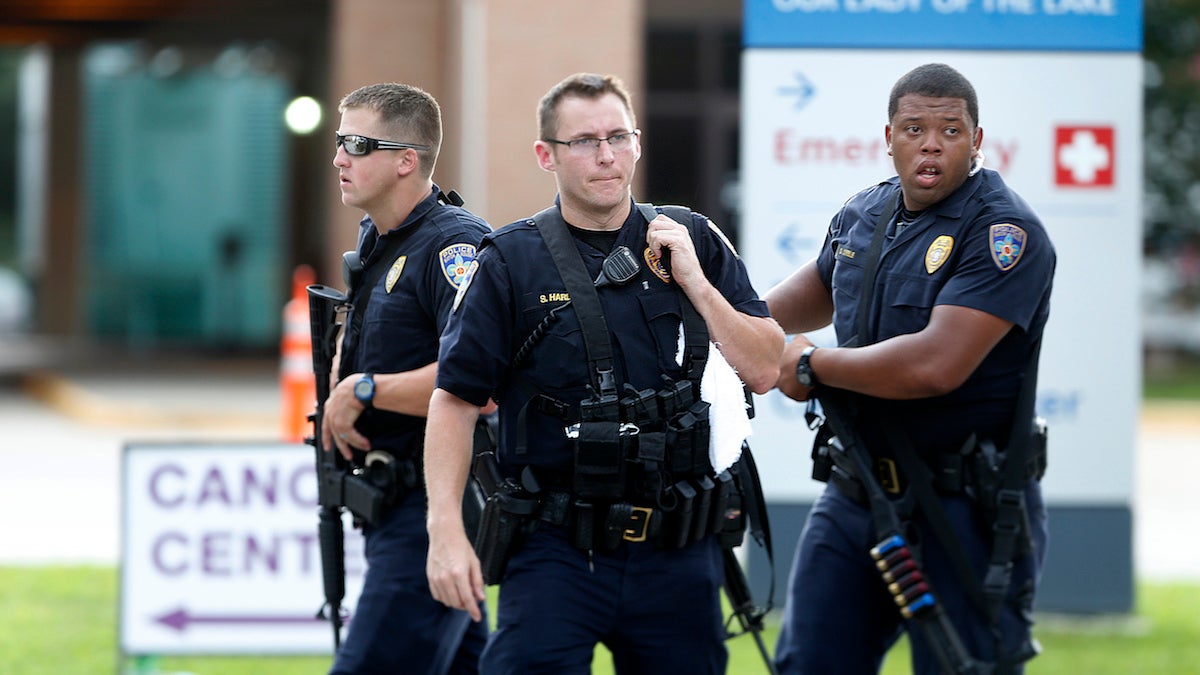Dear Gavin Long: Whose side were you on?

Police guard the emergency room entrance of Our Lady Of The Lake Medical Center
I wish I could have talked to 29-year-old Gavin Long before he died in the Sunday morning shootout in which he allegedly shot and killed three Baton Rouge police officers and wounded three more.
Had we had that conversation, there is only one question I would have asked him: Whose side are you on?
Because this much is clear: if you kill police officers, you can’t possibly be on our side.
Randomly killing cops isn’t protecting the black community. It’s endangering the black community. When you engage in wanton violence, when you aimlessly seek retribution, when you recklessly foment chaos, you encourage your enemies to do the same, and you undermine your message.
If Gavin Long had been on our side, his agenda would have been marked by specificity. His purpose would have been communicated with clarity. His goals would have been grounded in integrity.
He would not have needed a mask.
Long’s alleged crimes drew attention away from the legitimate African American demand for equal treatment under the law.
And while the Black Lives Matter movement does not condone such shootings, those who would devalue black people will point to Gavin Long to falsely paint the movement as violent. They will use his alleged actions to say that African Americans are undeserving of equal treatment.
We must reject such notions.
We must instead point to the fact that people seeking equality founded this nation. Then we must acknowledge that entire groups were left behind.
Senseless violence like the shootings in Baton Rouge makes that message nearly impossible to hear. In the wake of such carnage, peace inevitably eludes us.
That’s what’s happening here, and unless we take a moment to look at the realities that created this anger, we will retreat to our ideological corners and miss the opportunity to fix it.
When the Washington Post tracks every police shooting for two years and finds that unarmed blacks are five times as likely to be shot and killed by police as their white counterparts, there is a problem.
When whites can’t accept the disparity because they have never seen an unarmed citizen treated that way, there is a disconnect.
When we watch 12-year-old Tamir Rice shot dead on video by a police officer and there is no conviction, there is an issue.
When we see Eric Garner choked to death on video by a police officer, and the court system fails to deliver the justice it promises, there is anger.
And beyond the data, beyond the disconnect, beyond the issues, there is rage. There is hopelessness. There is grief.
The videotaped deaths of Alton Sterling and Philando Castille only add to that volatile mix of emotions.
But the killing of police officers is not the answer. In fact, such killings endanger all of us by drawing dividing lines in the blood of the fallen.
In the horrific aftermath of such violence, perhaps those dividing lines can become building blocks. Perhaps, in our shared grief for the black men and the officers who have died, we can find common ground. Perhaps, as we prepare for yet another round of statements, and funerals, and tears, we can tell the truth.
Justice in America is not, and has never been equal. But if we truly want to change that inequality, we must acknowledge it, we must address it, and we must fix it.
Doing so will be the highest tribute to the police officers and civilians who have fallen in this new struggle for justice.
If we don’t want to honor their lives by addressing the system they died for, then we must ask ourselves a pointed and uncomfortable question.
Whose side are we really on?
Listen to Solomon Jones weekdays 7-10 am on 900 AM WURD
WHYY is your source for fact-based, in-depth journalism and information. As a nonprofit organization, we rely on financial support from readers like you. Please give today.


